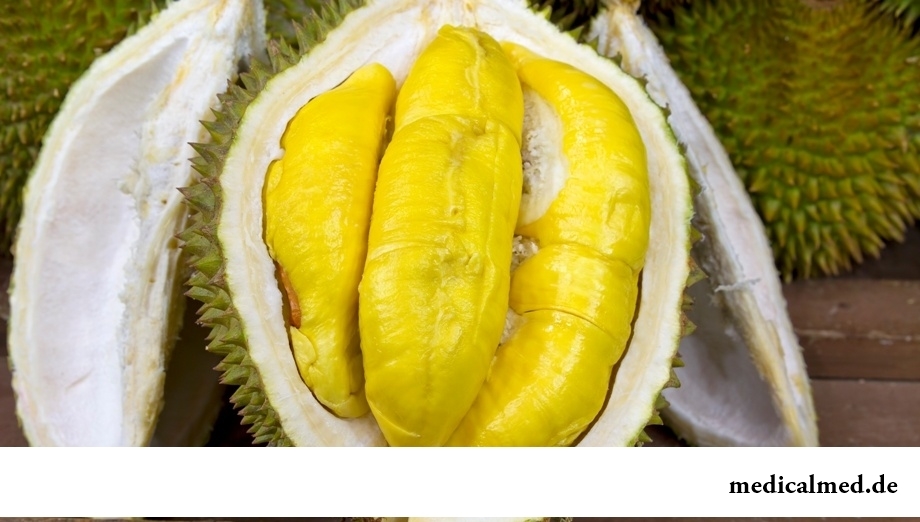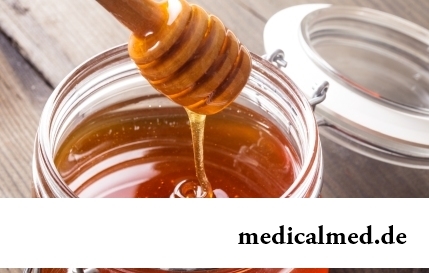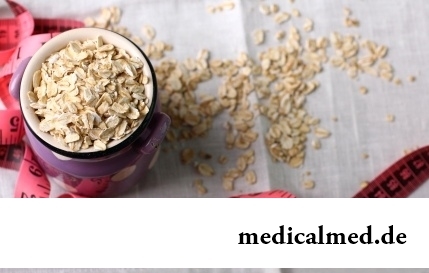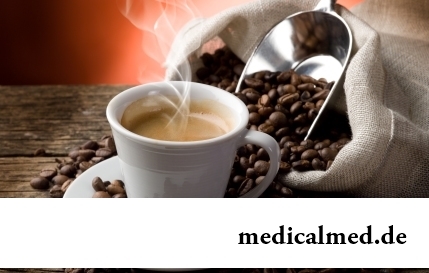





Durian
Durian is the tropical tree relating to Malvov' family. Its name is translated with Malaysian as "thorn". More than 6 centuries this plant is cultivated in the south of Thailand, in India, Indochina, Malaysia. Very seldom he can be met in Latin and South America. There are more than 30 kinds of durian, however fruits only 9 of them are edible. Taste and a smell of durian in many respects depends on a grade.

Description
Durian represents the shady evergreen tree reaching in height of 40 meters. Its leaves are located serially and have the pointed form. Their lower part is covered with scales, and upper smooth and brilliant. On the hanging-down branches and a trunk the flowers consisting of three petals and reminding a bell in the form are formed. They can be golden-brown, pink or white color. Durian flowers with approach of twilight blossom, and with the first beams of the morning sun fall down.
Fruits ripen in the spring. They have the spherical shape which is (quite often slightly extended) reach weight of 10,0 kg and to 30,0 cm in the diameter. Outside fruits are covered with a firm cover on which numerous pyramidal prickles are located. Pulp rather thick also has cream-yellow color. In its thickness large brilliant seeds are located. Green fruit of durian smells of a fresh grass. But the more it ripens, the its smell changes stronger, becoming sweetish and putrefactive and very caustic.
Because of the unpleasant smell durian in many countries of Asia is forbidden to be brought in public places (hotels, restaurants, shops, transport, etc.).
Legend of a durian origin
Many years ago there lived in Asia the king. It was in love with the girl who was not reciprocating to it. He asked for the help the local sorcerer. And that showed it a tree on which fruits with wonderful aroma and unusual marvelous taste grew. The sorcerer told that as soon as the girl tries this fruit, at once will fall in love with the king. And occurred. But the king was ungrateful and forgot to tell "thanks" to the sorcerer. Then that strongly became angry and damned the tree yielding fruits of "love".
After a while the king wanted to treat the darling with a strange fruit again. He came to a tree and saw on it fetid and prickly fruits. With rage he broke one such fruit and threw on the earth. The fruit broke up also the king, without having kept, tasted his pulp. What there was his surprise when he understood that only the durian smell, but not its magic taste changed.
As eat durian fruits
This macrotherm is quite often called "The king of fruit". Taste of durian is extraordinary good. He reminds taste of custard with vanilla and a papaya.
It is necessary to eat completely ripened fruits since immature are tasteless, and overripe strongly taste bitter. True gourmets consider durian one of the best delicacies. Is it it is necessary at once as soon as the fruit is opened. Only this way you will be able to estimate completely saturated taste of durian.
Durian is cracked and eat with a hand its pulp. But it is better to use a spoon, otherwise it will be very difficult to get rid of the unpleasant smell of durian which ate in skin. Locals wash down this fruit with slightly added some salt water which is poured in bowl-shaped halves of a shell. Thailand bakes pies with a durian pulp stuffing, and also pickle it in coconut milk. In Asia quite often add durian pulp to jams, ice cream and mousses. Taste of durian also is perfectly combined with coffee therefore it is quite often given for breakfast.
Crude fruits are used as vegetables. They are sliced small and extinguished or fried with addition of spices. Thais prepare from durian and pumpkin the special paste used as spice. Indonesia adds it to fresh fish soup. Seeds usually are not thrown out, and are well fried, crushed and used as spice.
Structure of durian
Pulp of this exotic fruit contains 1,47% of protein, 5,33% of fat, 23,29% of carbohydrates, 3,8% of food fibers and 0% of cholesterol. Caloric content of 100,0 g of pulp of durian makes 147 kcal.
Fruits of durian are vitamin-rich. Only 100,0 g of their pulp on a third cover the daily need of a human body for ascorbic acid. In addition they contain carotene, folic acid, Niacinum, Riboflavinum, niacin. They are also a source of minerals – calcium, phosphorus, iron.
The indole which is a part of durian not only gives it an unpleasant smell, but also useful bactericidal properties.
Durian contains also the organic sulfur promoting removal from an organism of toxins and slags. In addition it is a necessary component of many hormones and proteins, is necessary for health of skin, hair, a bone tissue.
One more useful property of durian it is possible to call the high content in it of fructose and sucrose that does this fruit to one of valuable energy sources.

Useful properties of durian
Durian is capable not only to satisfy feeling of hunger, but also has curative properties. Contain in its leaves mustard oil and гидрокситриптамин, having febrifugal effect. Their locals use for treatment of catarrhal and some infectious diseases. Besides bathtubs with infusion from leaves of durian help at treatment of jaundice since promote removal from an organism of the raised bilirubin.
Roots of a plant have antiviral effect.
Fruits of durian are used as good helminthic, and seeds have the knitting properties and are applied to treatment of diarrhea. The amino acids which are contained in fruits, sulfur and vitamins promote increase in the general immunity.
But, perhaps, the most important useful property of durian for men its ability to raise a potentiality is considered.
Contraindications and harm of durian
The people having a hypertension cannot eat durian at all. It cannot also be combined with any alcoholic beverages since it can lead to development of serious poisoning with the most serious effects, up to a lethal outcome.
It is not necessary to include durian in a diet of pregnant women and the feeding mothers. And, naturally, the use of fruits of this macrotherm is categorically contraindicated to the people suffering from an idiosyncrasy (individual intolerance) to it.
In operating time our brain spends the amount of energy equal to the 10 Watts bulb. So the image of a bulb over the head at the time of emergence of an interesting thought is not so far from the truth.

The trophic ulcer is not an independent disease. This heavy complication arising owing to a thermal injury (a burn...
Section: Articles about health
The list of stereotypes of which, apparently, all know strongly includes following: British surely eat porridge for breakfast. Perhaps, not all modern residents of Britain arrive quite so, but for those from them which continue to follow this t...
Section: Articles about health
Cystitis, or inflammation of a mucous membrane of a bladder, this very widespread disease which, owing to some features of a structure of bodies of urinogenital system, women have approximately four times more often than men. Women aged from 20 up to 45 years enter into the main risk group. Cystitis is an illness of a bacterial origin. It can have an acute or chronic current. The second option is dangerous not only a frequent recurrence, серьезн...
Section: Articles about health
People know that thermal sources have salutary force long ago. Treatment by natural waters is one and...
Section: Articles about health
The Genetically Modified Organisms (GMO) are plants or animals (as a rule, agricultural) to whose genotype purposeful changes were made. Opposition of supporters and opponents of inclusion of such organisms in foodstuff всег...
Section: Articles about health
It is difficult to revaluate importance of kidneys for an organism. These bodies not only perform work on purification of blood of decomposition products and removal of excess liquid. They are responsible also for production of some hormones necessary for maintenance of a normality of a bone tissue, and also for a producing red blood cells – erythrocytes....
Section: Articles about health
Each of us repeatedly noticed that the people having the same passport age are sometimes not similar on one-years at all. One...
Section: Articles about health
What woman does not dream of a beautiful and thick hair? While physicians developed difficult schemes on hair transplant, in the industry of hairdresser's art a few years ago there was a sensation – methods of hair extension appeared. It would seem, dreams came true...
Section: Articles about health
Childbirth is the most important event in life of each woman. We are women we give birth to the new little man on this light. Now the tendency to that was outlined, as men want to participate in labor too. But there is a question and whether it is worth allowing the husbands on childbirth?...
Section: Articles about health
The dietology, as well as other sciences, does not stand still. Food stuffs are exposed to comprehensive study, and scientists receive new and...
Section: Articles about health
About 10-15 years ago existence of the computer in the apartment of the Russian was considered as a rarity and office rooms were only at the first stage of equipment by these useful devices. Today practically in each house there is a computer (and often not one), and to constants...
Section: Articles about health
Summer in the heat. Many are going to spend vacation abroad. Travelers the tender seas, rest on beaches wait, for sightseeing, campaigns on natural and cultural reserves. But, unfortunately, on vacation also problems with health can wait for us. On a foreign trip it is possible to face also diseases which not only will spoil long-awaited issue, but also will force to be treated within long months after its termination. To be insured completely from troubles of it a sort...
Section: Articles about health
Statistically, at the address to doctors seven of each ten patients complain of a headache. Actually people, periodically...
Section: Articles about health
Life expectancy in various regions of Earth is not identical. Social stability, economic wellbeing, availability and level of medical care, household comfort, literacy of the population in the field of observance sanitary гигиен exert impact on it...
Section: Articles about health
High temperature - a frequent symptom of such widespread diseases as a SARS, quinsy, pneumonia, etc. To reduce heat, having facilitated a condition of the patient, doctors recommend to accept antipyretics, however their use is not always possible. Too frequent use of these drugs can lead to allergic reactions, and also overdose, causing poisoning. It happens also that there are no antipyretics simply in the house. In these situations it is pertinent to use it...
Section: Articles about health
Phobia – the persuasive fear of a certain contents shown in a specific situation against the will of the person. Concepts of a phobia and fear...
Section: Articles about health
With age in a human body harmful substances collect. We receive them with food and water, at inhalation of the contaminated air, reception of medicines, use of household chemicals and cosmetics. A considerable part of toxins accumulates in a liver, osnovno...
Section: Articles about health
Statistically, pathologies of a thyroid gland in the world more than 500 million people have. Failures in work of this body lead to heavy disbolism, development of heart diseases, vessels, a reproductive and nervous system. In hard cases excess or insufficient production of the main hormones of a thyroid gland (thyroxine and triiodothyronine) leads to essential decline in quality of life and disability....
Section: Articles about health
Deciding to get rid of an addiction, not all imagine what effects it is necessary to face. Process of refusal from ку...
Section: Articles about health
Olive oil – the product capable to make a powerful contribution to health of the person if it includes it in the diet. The rich vitamin composition of oil does it by a product number one from many diseases including from deadly. Only two tablespoons...
Section: Articles about health
The phenomenon of improvement of a condition of the patients at administration of drugs who are not containing active agents, so-called effect of placebo is known long ago. At the end of the 18th century the American doctor Perkins began to treat people the "miracle" sticks made of alloy of steel and brass. Was for several minutes to press such subject enough to a sore point that it became much easier for the patient. Having suspected Perkins of charlatanism, his colleagues tried to repeat "miracle" by means of sticks, steles...
Section: Articles about health
For many spouses the question of planning of a family is one of the main. The choice problem effect at the same time comes out on top...
Section: Articles about health
Visit of doctors – business not the most pleasant, and many people do not hurry to undergo necessary planned inspections. Such behavior is extremely thoughtless and improvident. Our health is necessary not only to us: wellbeing of darlings, children, grandsons and престар...
Section: Articles about health
History of use of an anesthesia during operations contains more than 160 years. Annually in the world hundreds of thousands of surgical interventions during which to patients the substances immersing them in a dream and saving from pain are entered are carried out. Using an anesthesia many myths and delusions are still connected. It is worth getting acquainted with the most widespread of them....
Section: Articles about health
Iodine - one of thirty most important microelements in our organism. The main role of iodine consists in synthesis thyroid гормо...
Section: Articles about health
In consciousness of our many compatriots idea that folk remedies if are no more effective, than medicinal "chemistry" strongly took roots, then are precisely less harmful. Unfortunately, it is not always fair: some receptions treating...
Section: Articles about health
Tuberculosis – a serious infectious disease which development is caused by mycobacteria (Koch's bacilli). The illness is known from an extreme antiquity. Long time fight against it was considered as ineffective. Quite often the disease affected the whole families, and mortality from it was very high. It became the reason of emergence of a set of delusions concerning transmissibility and a possibility of treatment of tuberculosis....
Section: Articles about health
